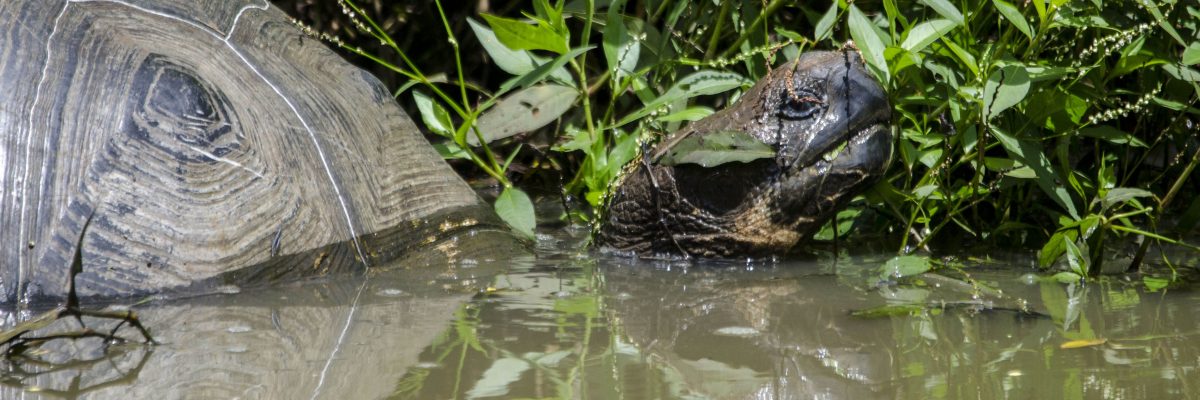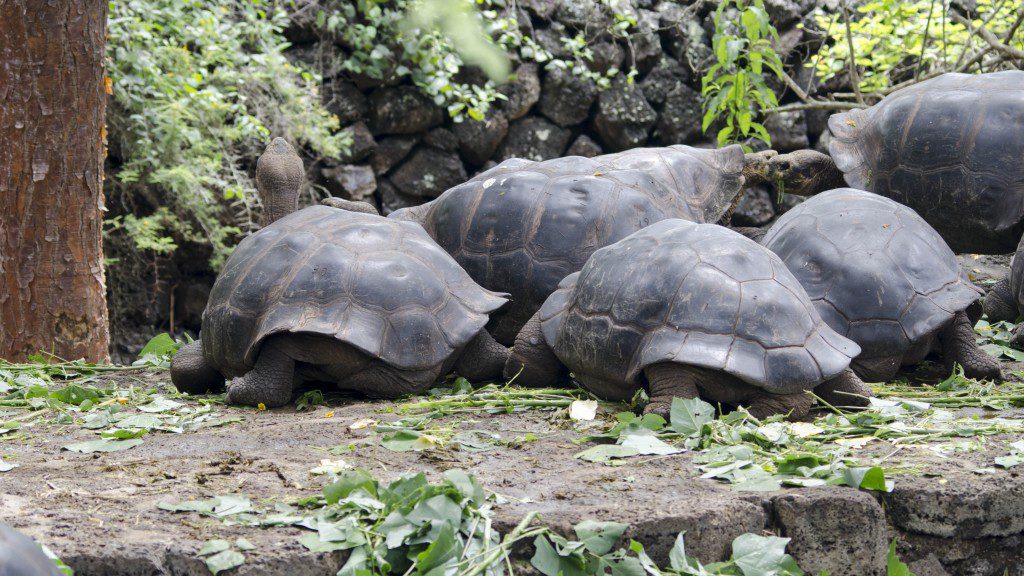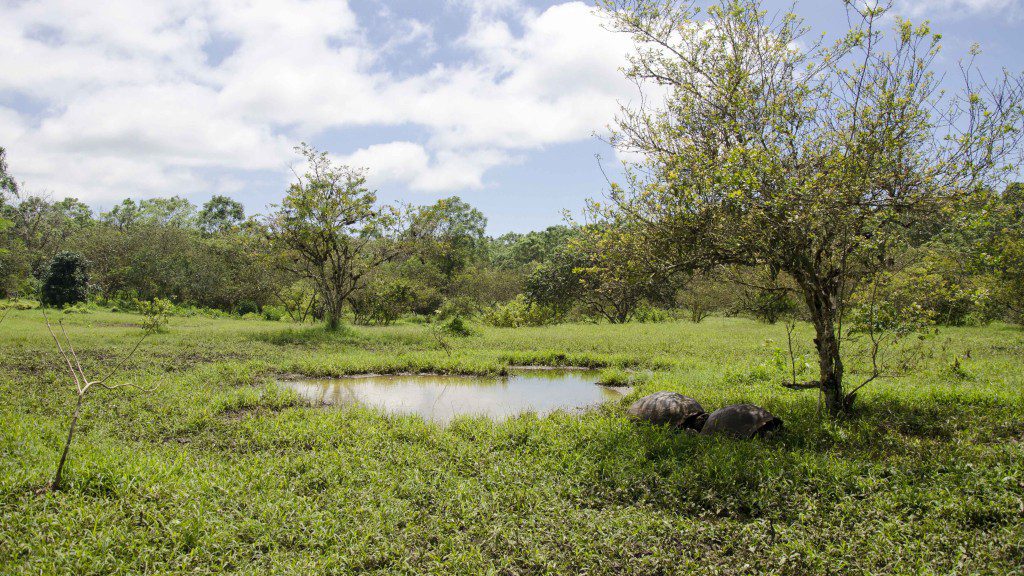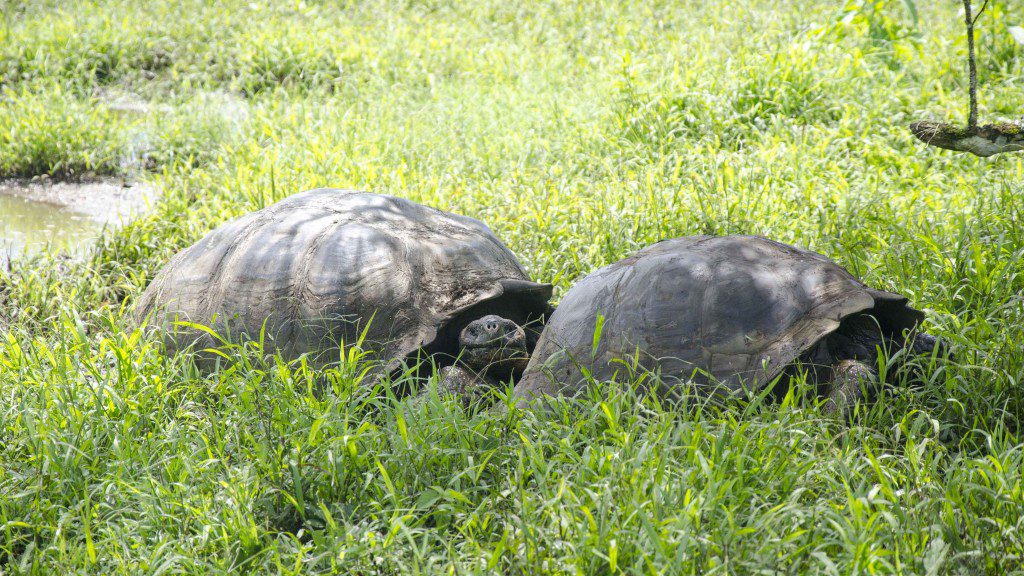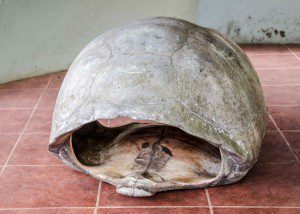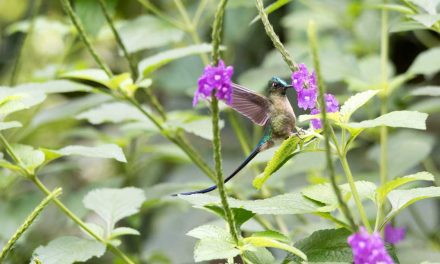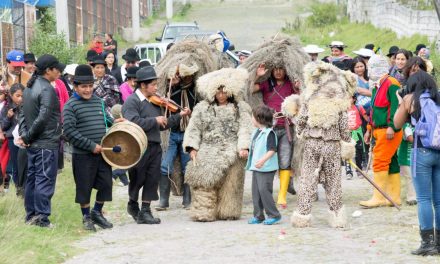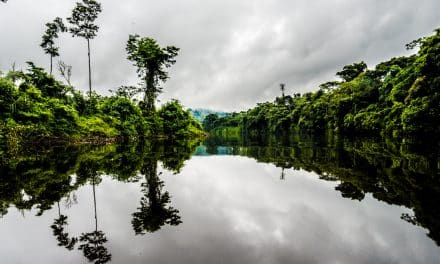As responsible travelers evolve, so do the stories we share.
This article is part of our living archive — trusted content we continue to care for.
First published on March 3, 2016 • Last updated on March 3, 2016.
Can you imagine visiting the Galapagos and not seeing a Galapagos Tortoise in the wild?
Unless you plan a day trip to go and see some, you could miss them completely. Tortoises are endangered and though some populations still live in the wild, they are not always found in easy to visit locations. And, like any wild animal, they are mobile and may not be where you expect to find them! The Galapagos National Park Service has a reserve that can be visited without guides but you will require transportation for the three to four hour trip, not including hiking time. For a more convenient place to see tortoises, keep reading!
 To learn about tortoises living in the wild, a visit to Rancho Primicias on Santa Cruz Island is worth your time. It is a true reserve where tortoise roam at will. The tortoises are not kept in cages nor are they prevented from leaving by walls or barriers. Barbed wire fences keep predators out but allow tortoises the freedom to leave. And leave they must if they want to lay eggs.
To learn about tortoises living in the wild, a visit to Rancho Primicias on Santa Cruz Island is worth your time. It is a true reserve where tortoise roam at will. The tortoises are not kept in cages nor are they prevented from leaving by walls or barriers. Barbed wire fences keep predators out but allow tortoises the freedom to leave. And leave they must if they want to lay eggs.
The average tortoise is not ready to mate until 20-25 years old. And those are the tortoises you will see at the reserve. One reason the species is endangered is because young tortoises are often eaten by predators before they give birth to the next generation. Young tortoises are very small and make easy prey. The National Park Service has created a partial solution – tortoise hatcheries.
Most visitors to the Galapagos see young tortoises at a hatching facility on one of three islands. The most well known is at the Charles Darwin Center on Santa Cruz. There is another on Isla Isabela. And a third, which is the newest and, in our opinion, the nicest, on San Cristobal.
The hatcheries all have something in common – they are located in hot, dry places. Tortoise eggs require heat to hatch. In fact, the amount of heat can determine the sex of the tortoise with more males hatching when eggs are laid early and more females if eggs are laid late in the season. Scientists use incubators to help with the process but once hatched, the young tortoises still need a hot dry climate for about the first 10 to 15 years of their lives. Then tortoises migrate with the seasons from the lower elevations to the highlands. The tortoises are drawn up the slopes of the mountains in search of mates.
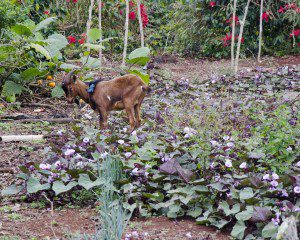 This proposes a problem for many a tortoise. The highlands on Santa Cruz, Isabela, and San Cristobal are also agricultural areas. Many tourists don’t realize before visiting the Galapagos that many of the islands have a large population of humans. Because of this, much of the original tortoise habitat has been converted to farm fields and pastures so that meat, fruit and vegetables can be locally grown. In some locations, the tortoises co-exist with the farms. Farmers can make it easier for tortoises to cross their land by protecting “tortoise highways,” many of which have been used for generations.
This proposes a problem for many a tortoise. The highlands on Santa Cruz, Isabela, and San Cristobal are also agricultural areas. Many tourists don’t realize before visiting the Galapagos that many of the islands have a large population of humans. Because of this, much of the original tortoise habitat has been converted to farm fields and pastures so that meat, fruit and vegetables can be locally grown. In some locations, the tortoises co-exist with the farms. Farmers can make it easier for tortoises to cross their land by protecting “tortoise highways,” many of which have been used for generations.
Rancho Primicias is a partial solution to this problem. It is located in the highlands of Santa Cruz. This area was once farmland before being converted once again to tortoise habitat. It receives lots of rain. There are huge muddy ponds for cooling off on hot days and lots of green vegetation for food. No tortoise is fed by humans in this location. It’s a perfect place for mature wild tortoises.
On the day we visited, we learned that the rainy season is also mating season. We actually saw tortoises in action though we only have photos of the tortoises after the fact. There were not many tortoises on the day of our visit and our guide, Daniela, wondered if the huge El Niño powered storm a few days before our visit had had an impact on tortoise arrivals. It had definitely had an impact on the trails. We had traded our hiking boots for rain boots that went up to our knees and found them necessary for many of the boggiest parts of the trail.
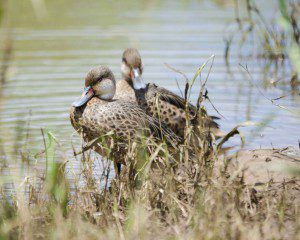 The reserve isn’t just great tortoise habitat but is also home to a wide variety of birds, including the White-cheeked Pintail Duck. The place was also abuzz with insect life and lots of butterflies.
The reserve isn’t just great tortoise habitat but is also home to a wide variety of birds, including the White-cheeked Pintail Duck. The place was also abuzz with insect life and lots of butterflies.
At the end of our visit, we stopped at a small covered patio to explore a collection of huge tortoise shells, small tortoise skulls and other naturalist finds from the area. It’s a perfect place to ask questions about the life cycle of the Galapagos Tortoise and to let young children experience some “hands on” discovery that will make the visit all the more memorable.
- Tortoise Shell, Tortoise Reserve, Santa Cruz Island, The Galapagos
- Tortoise Skull, Tortoise Reserve, Santa Cruz Island, The Galapagos

